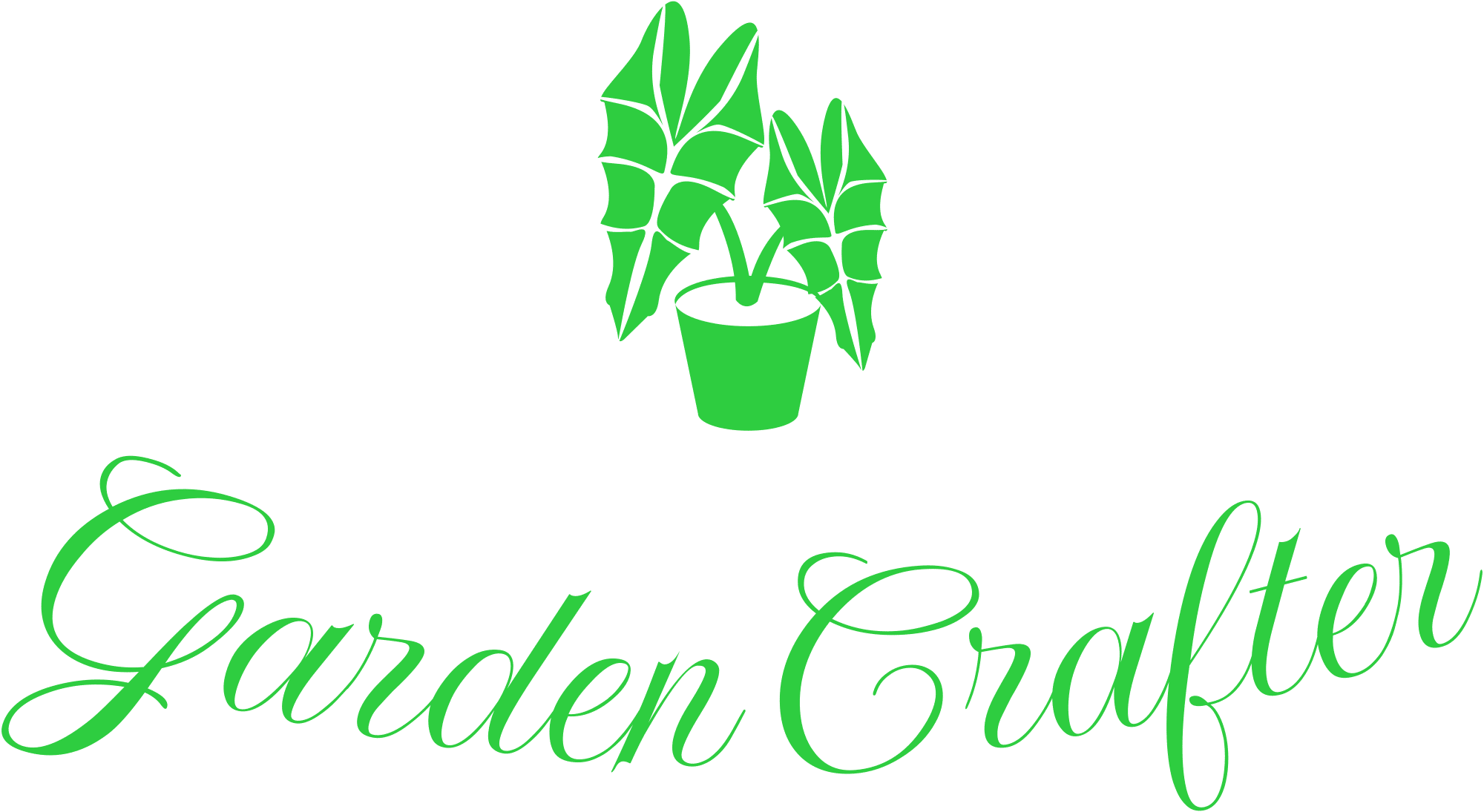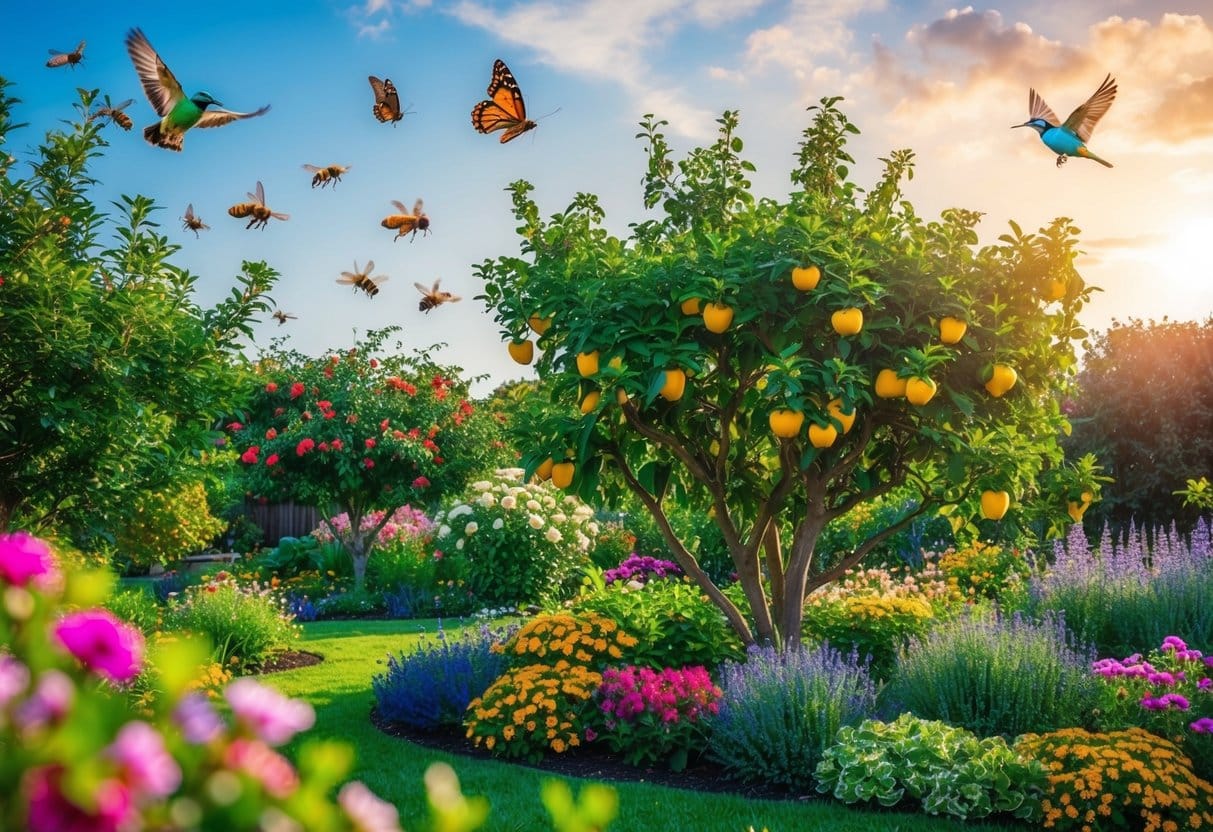Creating a welcoming space for pollinators can transform any garden into a vibrant habitat.
By selecting the right native plants, homeowners can attract a variety of birds, butterflies, and bees. These creatures play a crucial role in pollination, making it essential to provide them with food sources such as nectar, pollen, and seeds.
To support local wildlife, it is important to choose plants that bloom during different seasons.
This not only encourages pollinator visits throughout the year but also ensures that birds have seeds to feed on during the colder months.
Expert insights suggest that planting a diverse selection of flora will lead to a lively and beneficial environment.
Key Takeaways
- Native plants attract birds and beneficial insects to gardens.
- Seasonal blooms provide food sources for pollinators year-round.
- A diverse plant selection enhances the garden’s appeal to wildlife.
Flowering Dogwoods
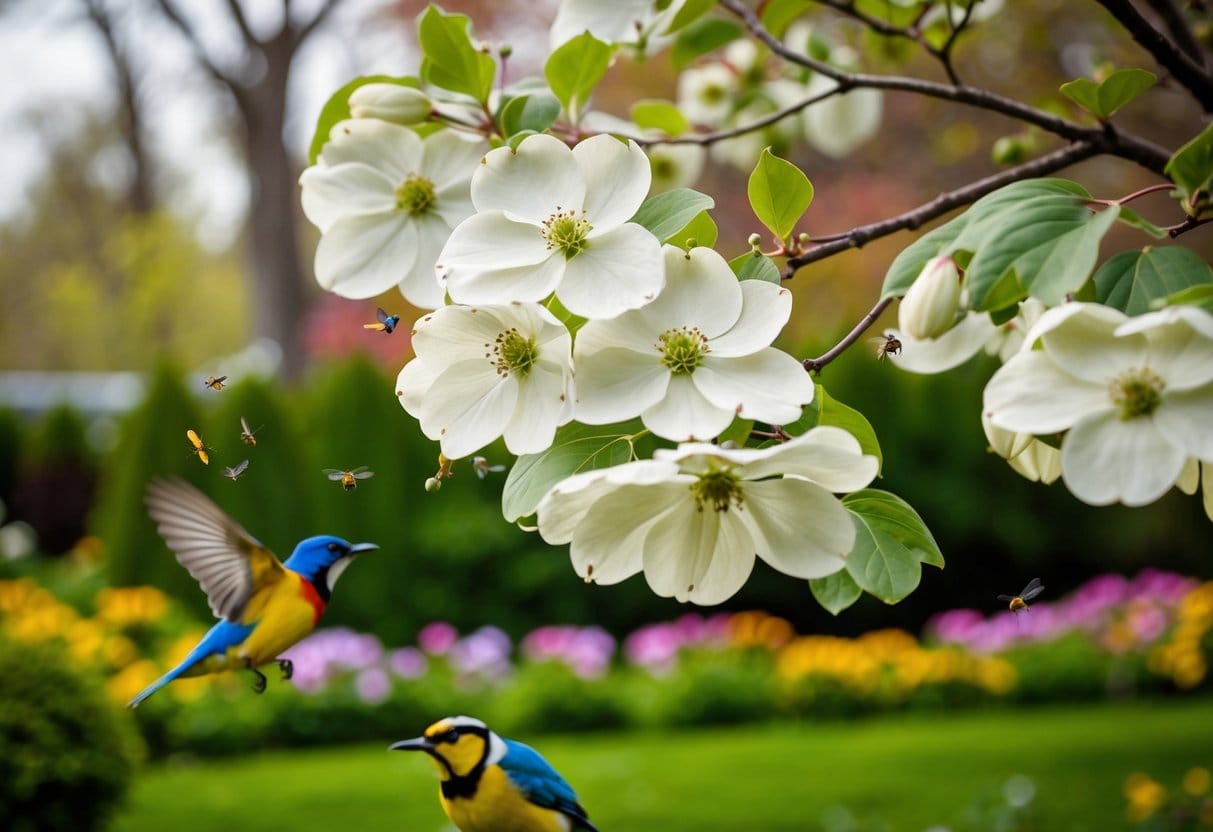
Dogwoods belong to the Cornaceae family. The flowering dogwood (Cornus florida) is known for its attractive flowers that draw in pollinators and its berries that feed local wildlife.
This tree often grows in wooded areas and provides habitats for birds. It also displays stunning blooms that enhance landscaping appeal.
- Hardiness Zones: 5 to 9
- Height and Width: 15 to 30 feet tall and wide
- Care Needs: Prefers partial shade to full sun and thrives in moist, well-drained soil
Winterberry
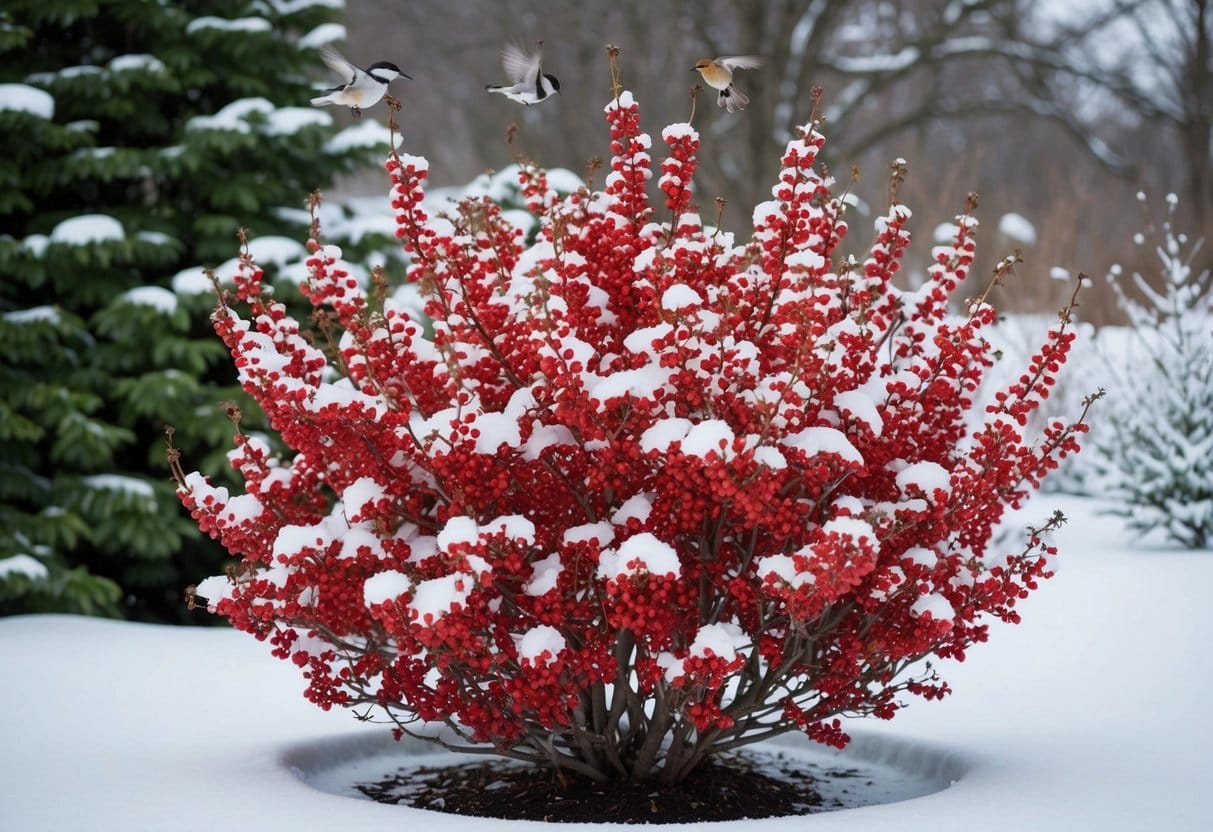
The winterberry bush (Ilex verticillata) features smooth leaves and bright red berries, which are a crucial food source for birds during winter.
This bush thrives in various environments.
- Growth Zones: 3 to 9
- Dimensions: 6 to 12 feet tall and wide
- Care Needs: Requires full sun to partial shade and well-drained soil
Goldenrod
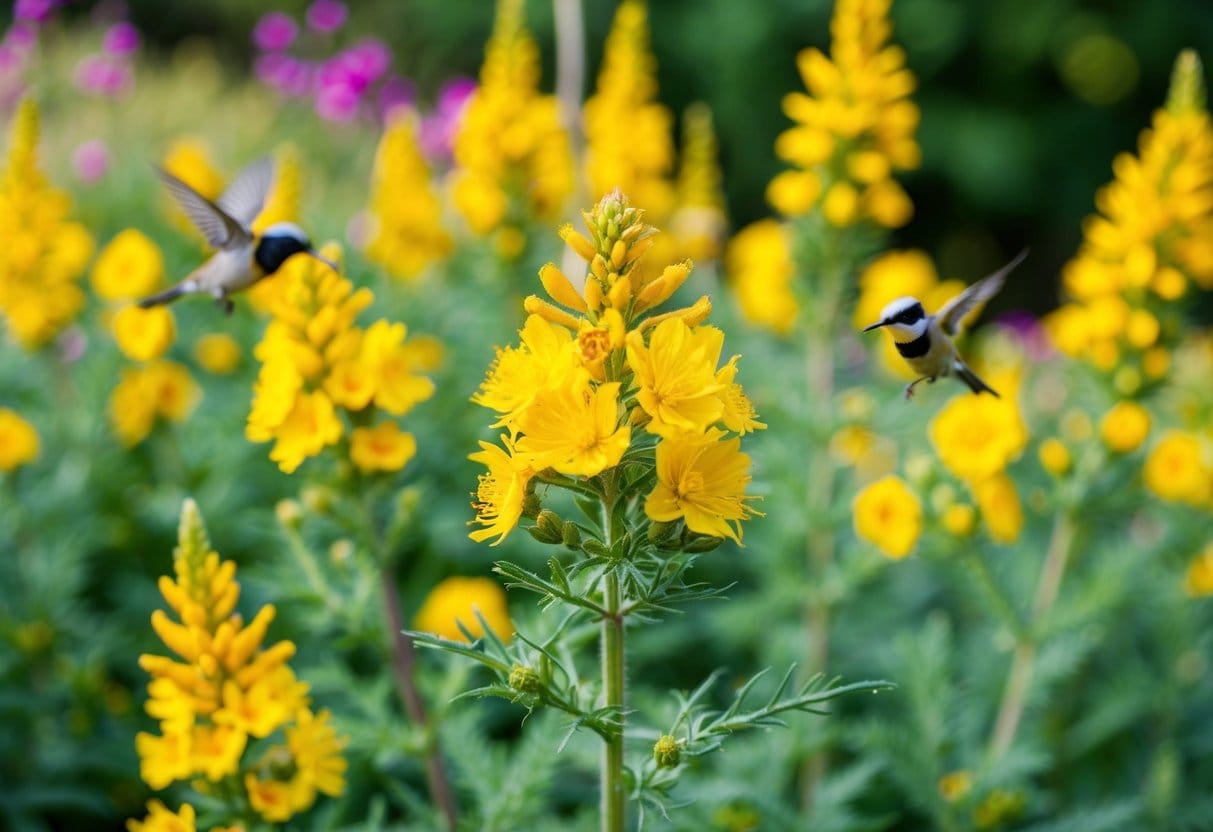
Goldenrod (Solidago) belongs to the aster family and blooms in the fall. It features clusters of bright yellow flowers that attract pollinators late in the growing season.
According to experts, goldenrod is essential for bees preparing for winter and serves as an important food source for birds.
- Growing Zones: 2 to 8
- Height: 2 to 6 feet tall
- Width: 1 to 3 feet wide
- Care Needs: Requires full to partial sunlight and well-drained soil
American Elderberry
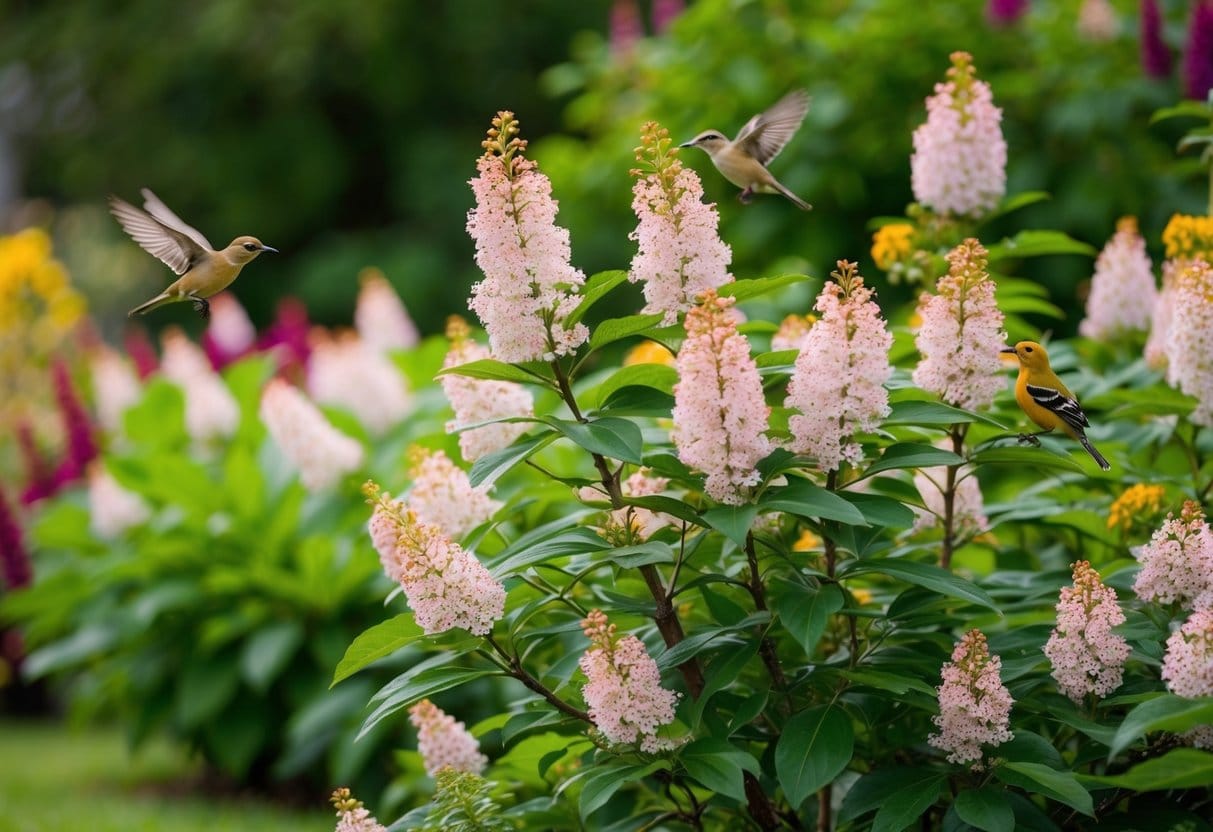
American elderberry (Sambucus canadensis) features numerous small flowers, attracting many pollinators. Its small, purple berries mature in late summer and early fall, appealing to birds and wildlife, as well as people who enjoy the flavor.
- Growing Zones: 4 to 10
- Height: 5 to 12 feet
- Width: 6 to 10 feet
- Care Needs: Prefers full sun and moist soil
Golden Alexander
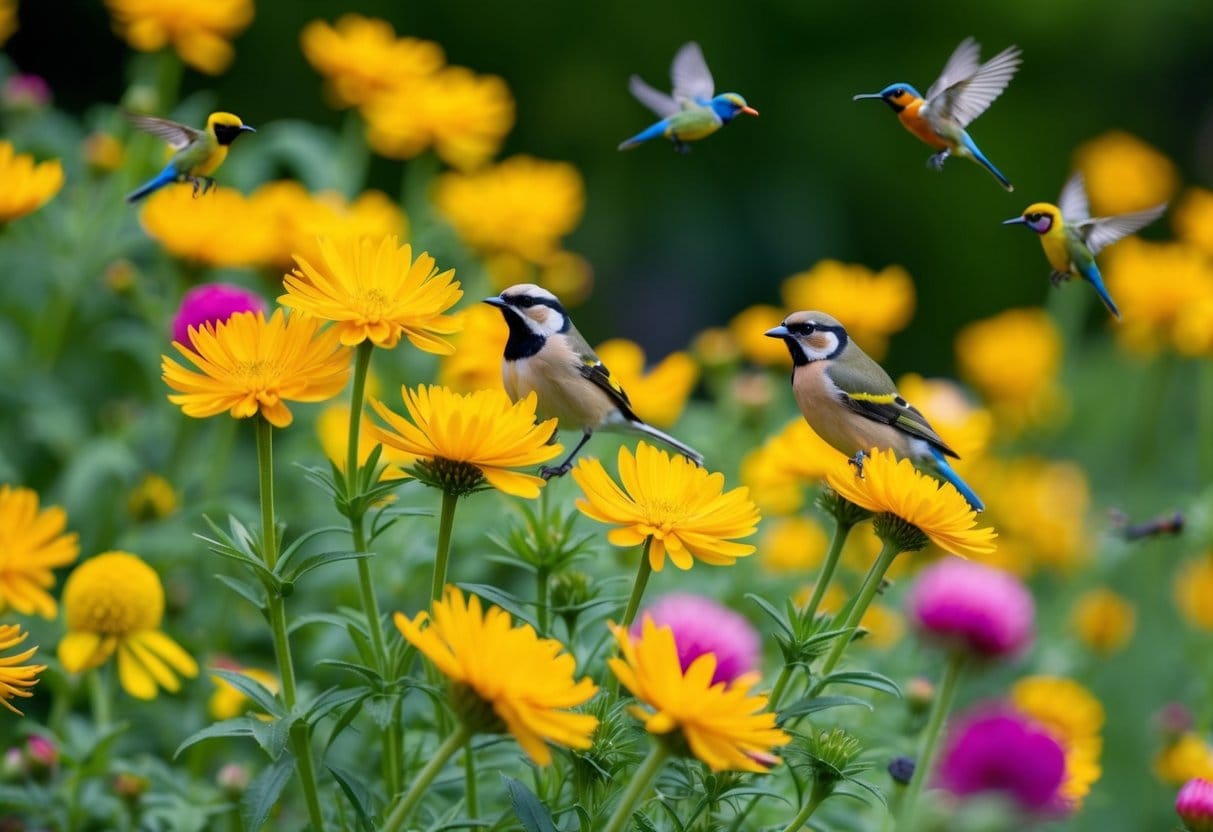
Golden Alexander (Zizia aurea) is a cheerful yellow wildflower that brightens up gardens in May and June. Its flat clusters of small flowers attract birds and butterflies, creating a lively scene.
- Growing Zones: 3 to 8
- Height and Width: 12 to 24 inches
- Care Needs: Thrives in full sun to partial shade; prefers clay soil
Wild Geranium
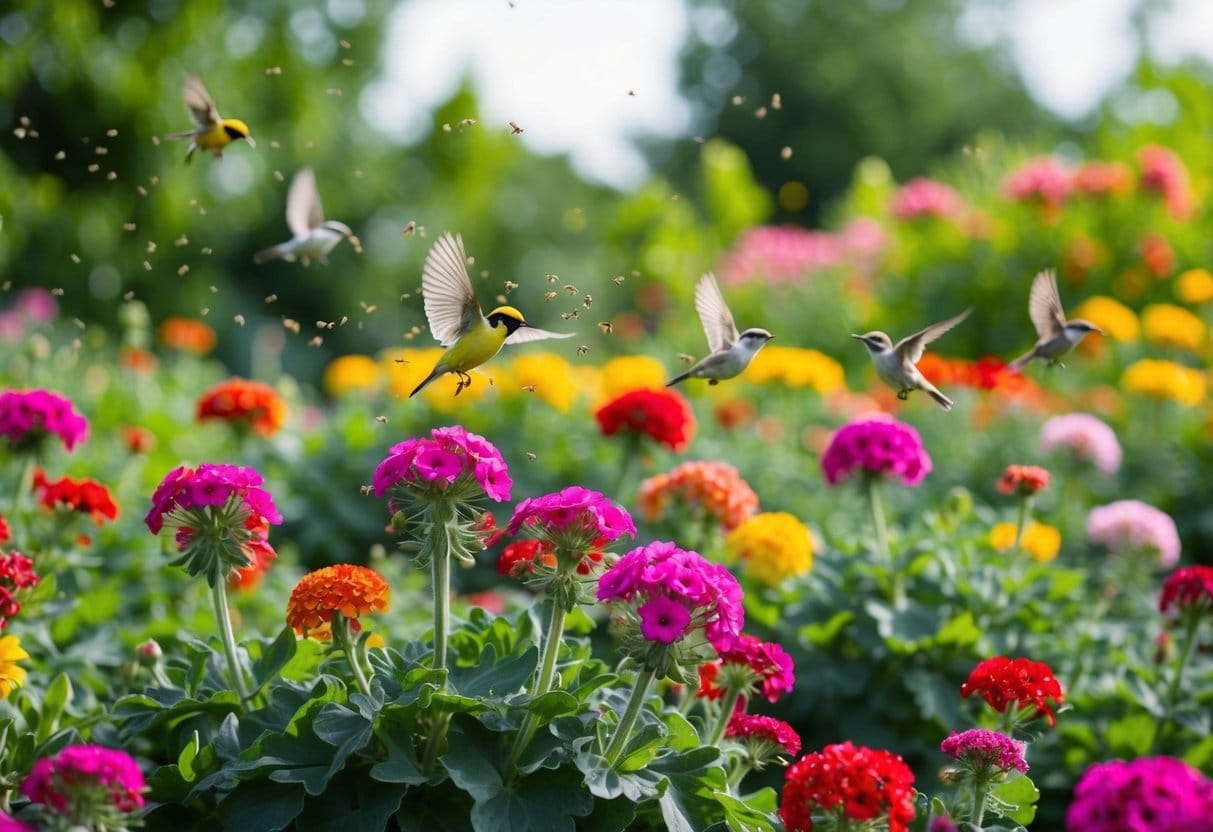
Wild geranium (Geranium maculatum) is a perennial plant that produces delicate purple or pink flowers from April to June. This plant attracts many pollinators and offers seeds for birds.
- Growth Zones: 5 to 8
- Dimensions: 12 to 28 inches tall and wide
- Care Needs: Prefers full shade to partial sun with moist soil
Columbine
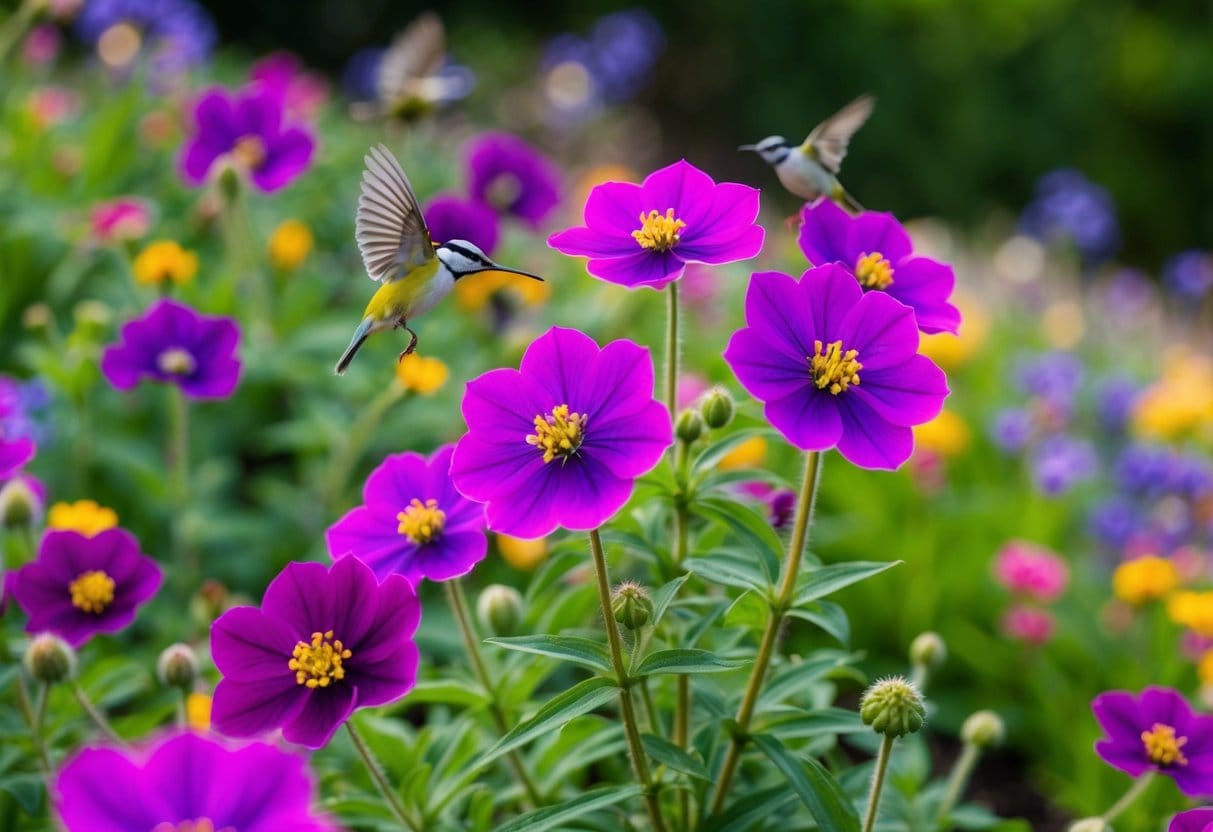
Columbine flowers, known scientifically as Aquilegia, showcase vibrant blooms in colors like red, pink, blue, yellow, and white. The unique shape, with backward-extending petals, enhances their appeal. These hardy perennials bloom from zones 3 to 9 and grow 12 to 36 inches tall by 12 to 24 inches wide. They thrive in full sun to partial shade and prefer well-drained soil, making them perfect for attracting hummingbirds to any garden.
Foxglove Beardtongue
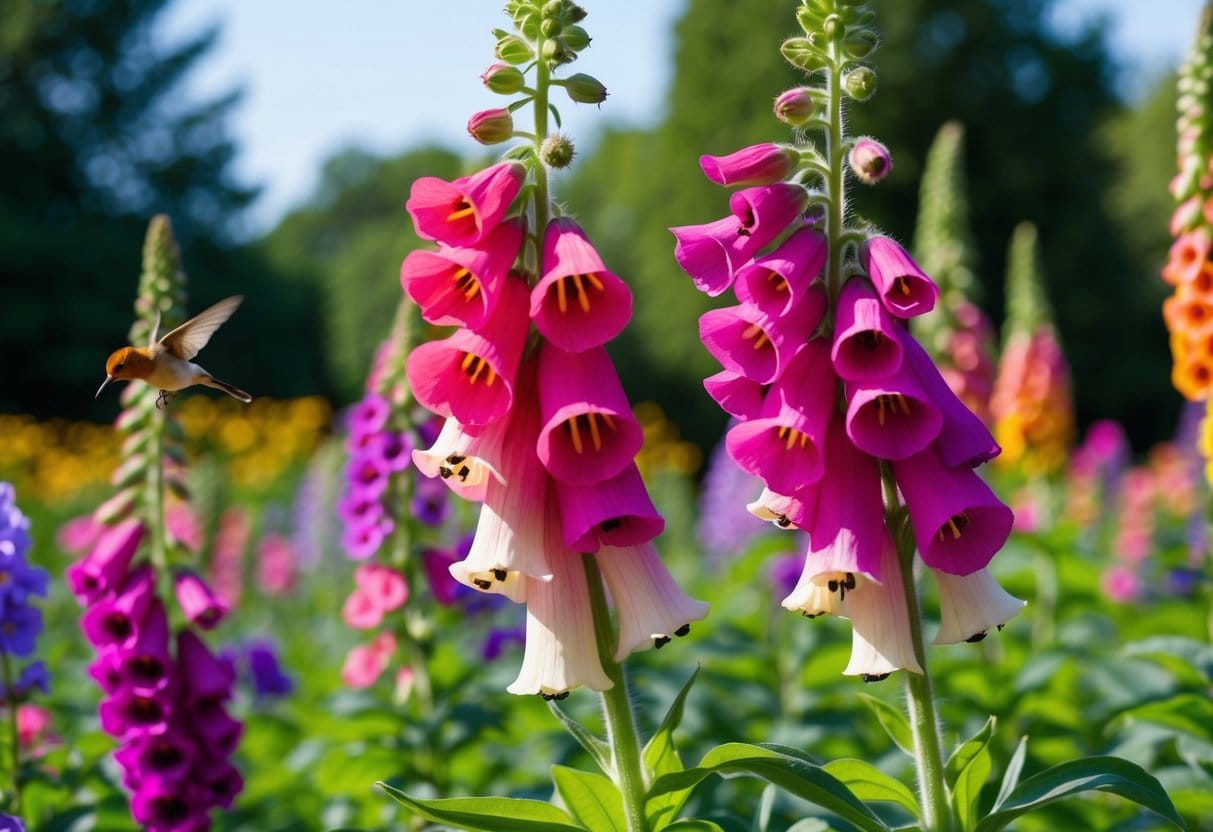
Foxglove beardtongue, known scientifically as Penstemon digitalis, features tall clusters of bell-shaped blooms in pink, white, and purple. These flowers attract hummingbirds with their tubular shape, allowing easy access to nectar. Once blooming ends, the plant produces seeds that serve as a food source for birds.
- Hardiness Zones: 3 to 9
- Height: Ranges from 6 inches to 6 feet
- Width: Spans 8 inches to 3 feet
- Care: Thrives in full sun and well-drained, sandy soil
Azure Star
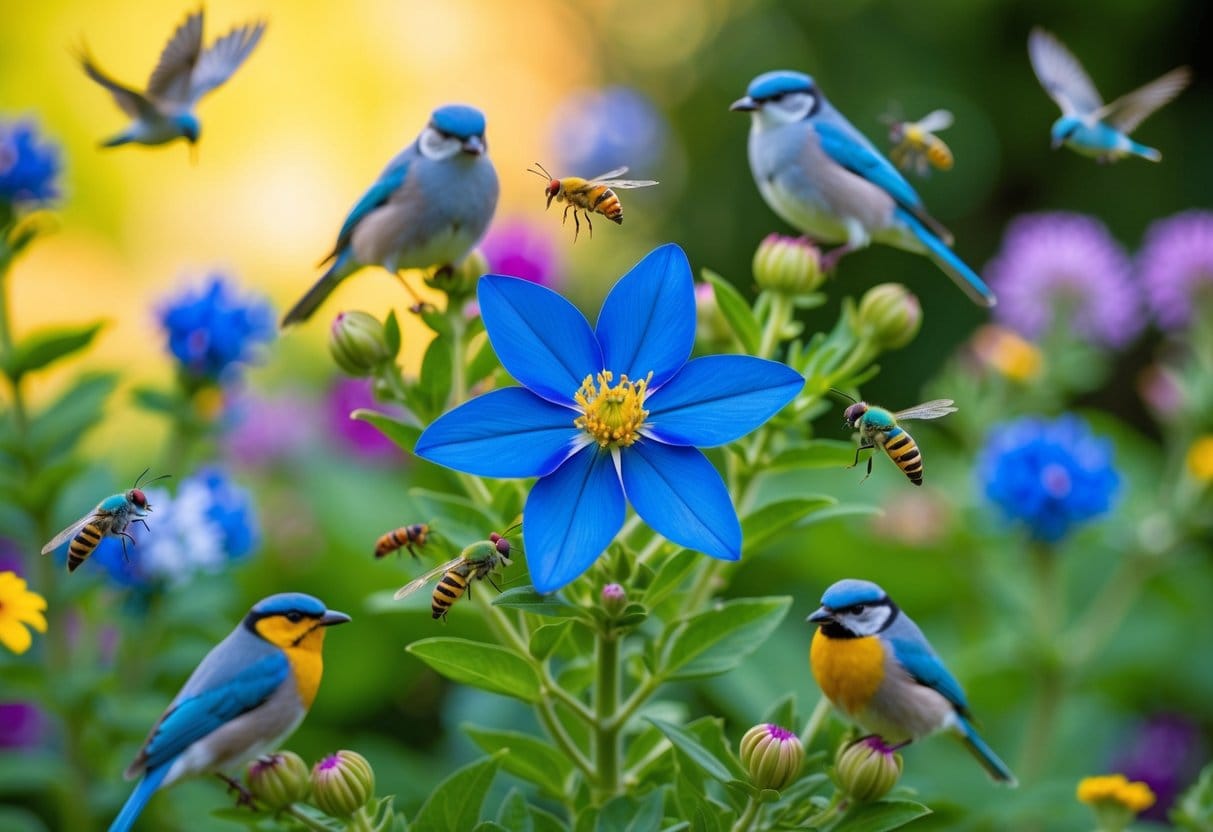
Star-like blue blossoms give Amsonia its name, attracting hummingbirds and beneficial insects with its nectar and pollen. This plant is also resistant to deer.
- Hardiness Zones: 3 to 9
- Dimensions: 42 inches tall by 24 inches wide
- Care Needs: Thrives in partial shade to full sun and prefers rich, moist soil.
Bee Balm
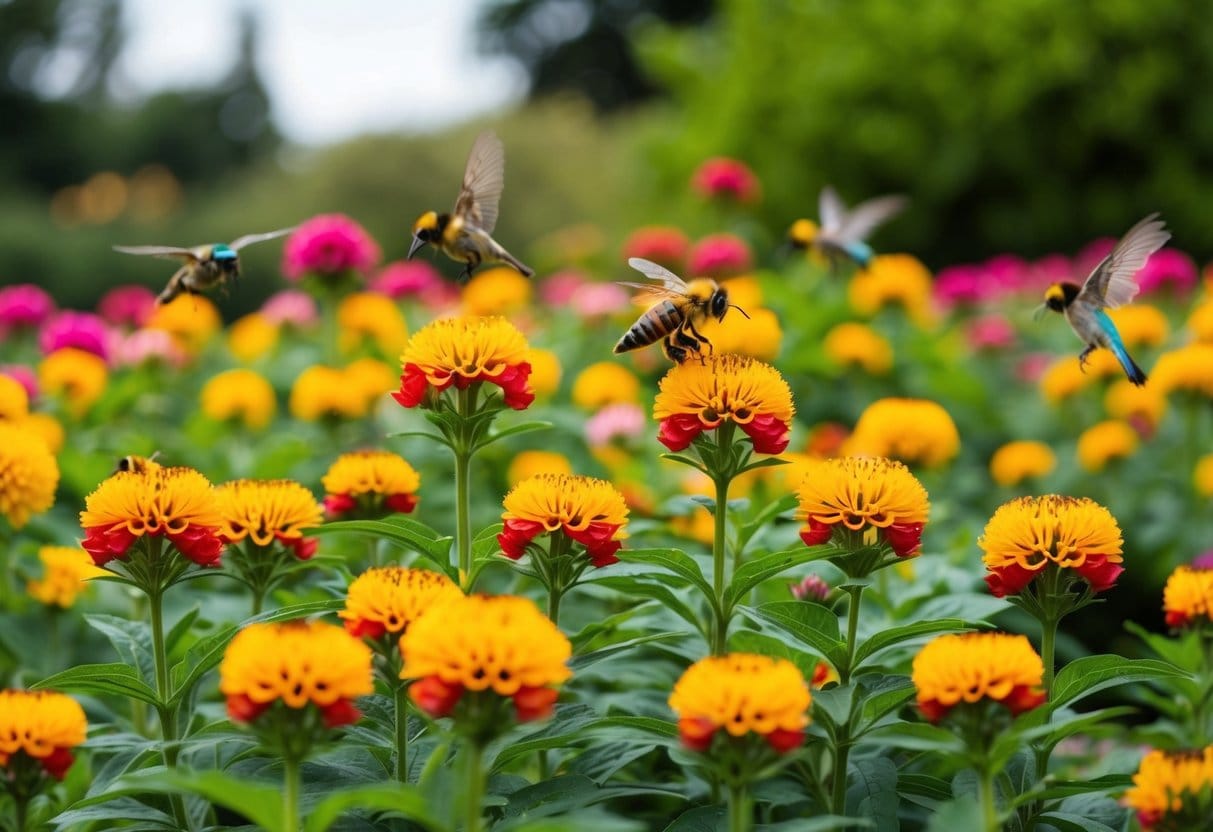
Bee balm, known scientifically as Monarda, belongs to the mint family. Its purple flowers, which grow in clusters, produce sweet nectar that attracts bumble bees, butterflies, and hummingbirds.
- Growth Zones: 3 to 9
- Height and Width: 1 to 4 feet both ways
- Care: Requires full sun and well-drained soil
False Sunflower
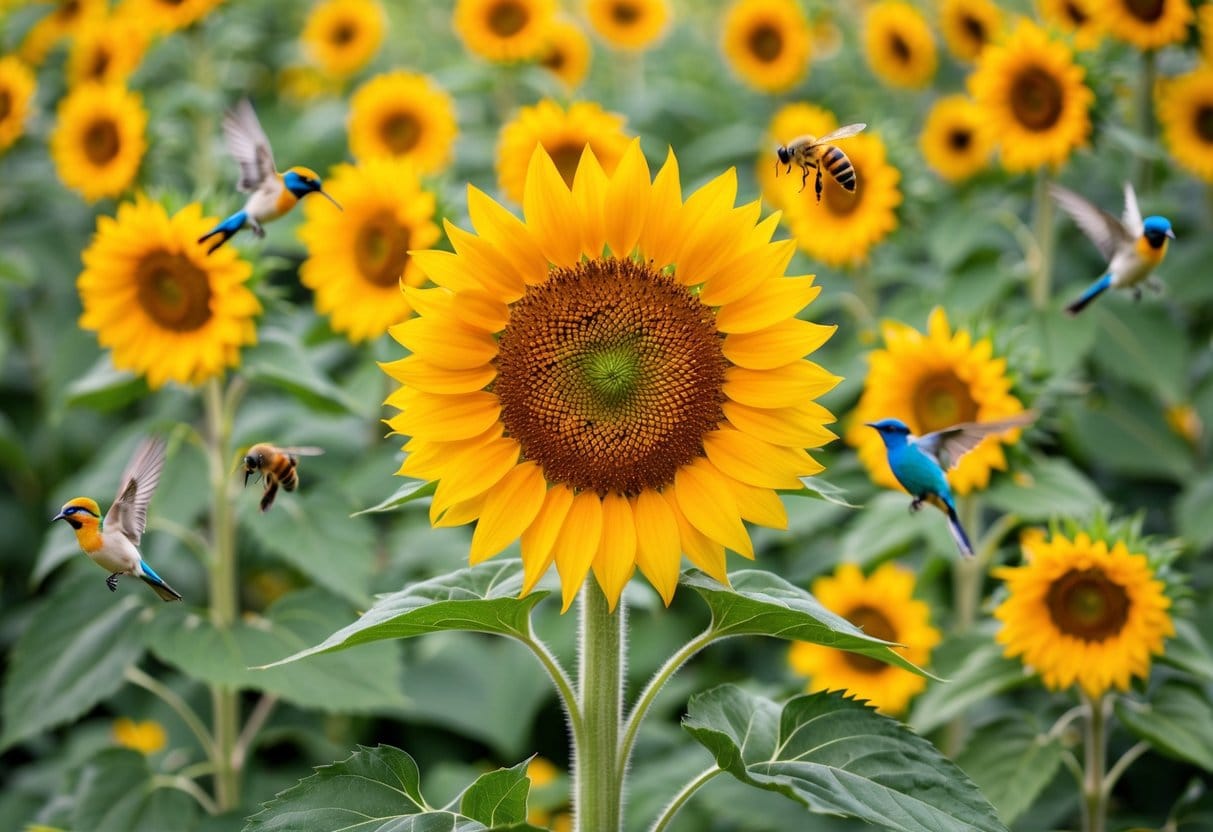
False sunflower (Heliopsis helianthoides) is a hardy plant that thrives in zones 3 to 9.
It grows between 1 to 5 feet tall and 1 to 3 feet wide, featuring vibrant 2-inch-wide yellow flower heads that brighten gardens during summer. In fall and winter, it provides seeds that support local birds.
Care Needs:
- Light: Full sun
- Soil: Loamy, well-drained soil
Joe Pye Weed
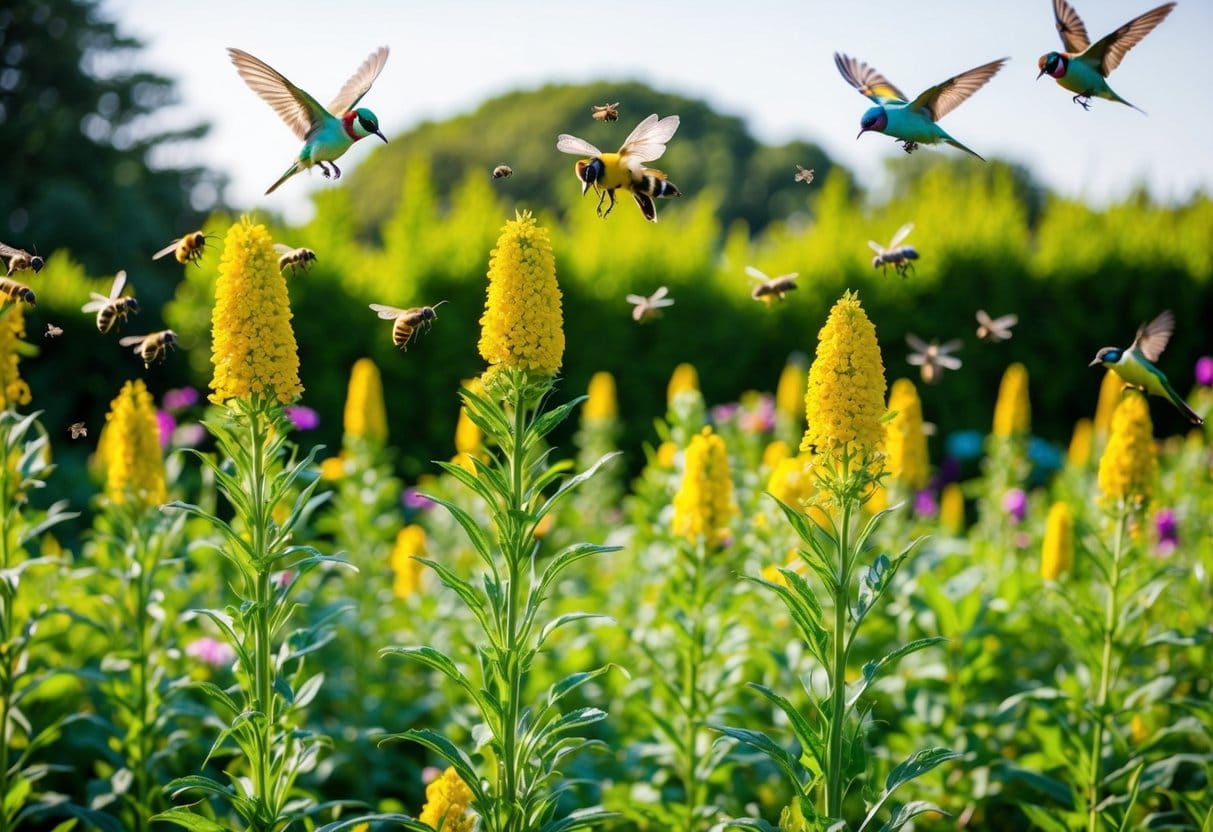
Joe Pye weed (Eutrochium purpureum) showcases lovely purple or pink flowers that emit a pleasant scent, attracting various pollinators throughout its summer flowering period.
In autumn, this perennial plant offers seed heads that serve as food for birds in the winter.
- Growing Zones: 4 to 9
- Height and Width: 5 to 7 feet tall and 1 to 4 feet wide
- Care Needs: Thrives in full sun to partial shade with moist, well-drained soil
Asters
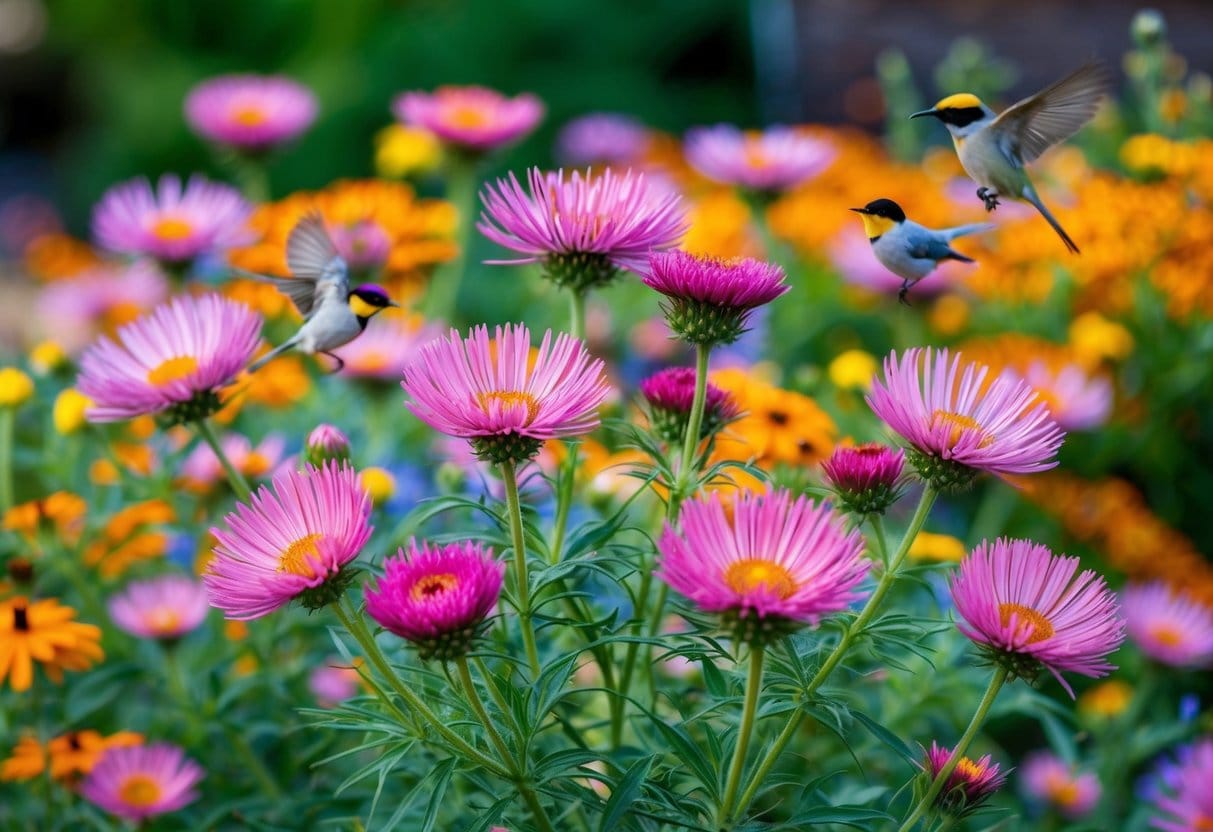
Asters are beautiful fall flowers, showcasing pink and purple hues with bright yellow centers. These plants attract various garden visitors, including birds and bees. When paired with goldenrod, asters enhance the garden’s ability to support wildlife during winter.
- Growing Zones: 3 to 8
- Height and Width: Ranges from 1 to 6 feet tall and 1 to 4 feet wide
- Care Needs: Requires full sunlight and well-drained soil
Cardinal Climber
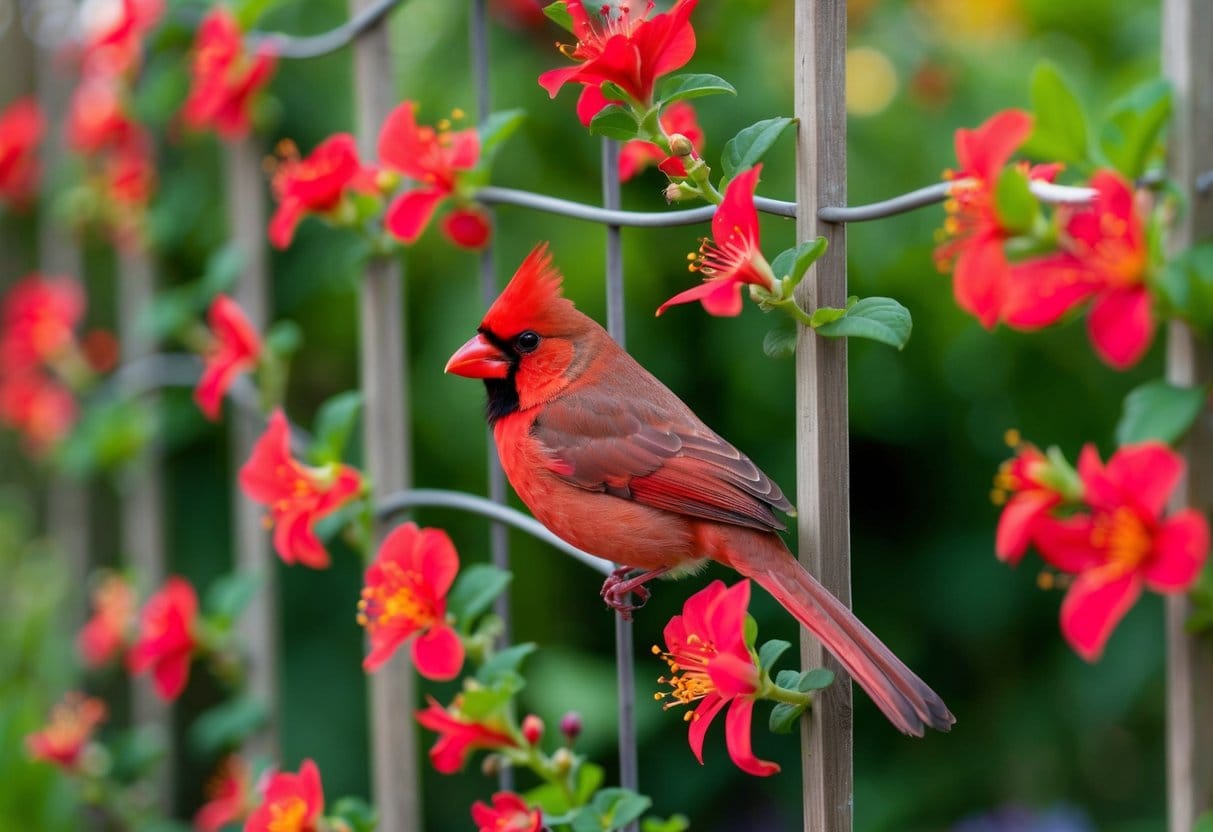
Cardinal climber (Ipomoea sloteri) is a climbing vine that can also serve as ground cover. It features bright red, trumpet-shaped flowers that attract pollinators like the monarch butterfly, especially during summer and fall.
- Growing Zone: 3 to 10
- Height: 10 to 15 feet
- Width: 1 to 2 feet
- Light Needs: Full sun
- Soil Type: Well-drained
Oak Tree
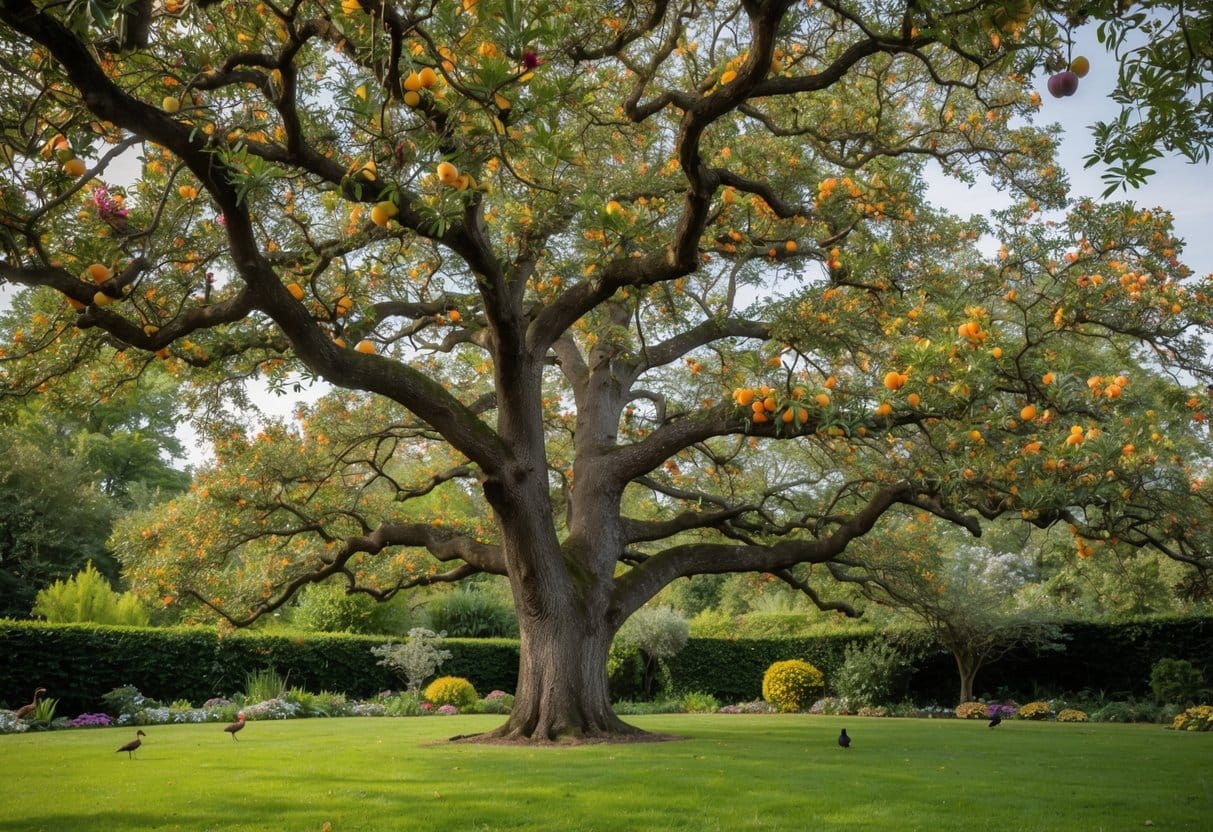
Planting an oak tree (Quercus) can greatly enhance any landscape. It attracts various pollinators and supports over 4,000 species in North America.
- Hardiness Zones: 3 to 8
- Height: 40 to 100 feet
- Width: 60 to 100 feet
- Growth Needs: Thrives in full sun with well-drained soil rich in organic matter
Butterfly Bush
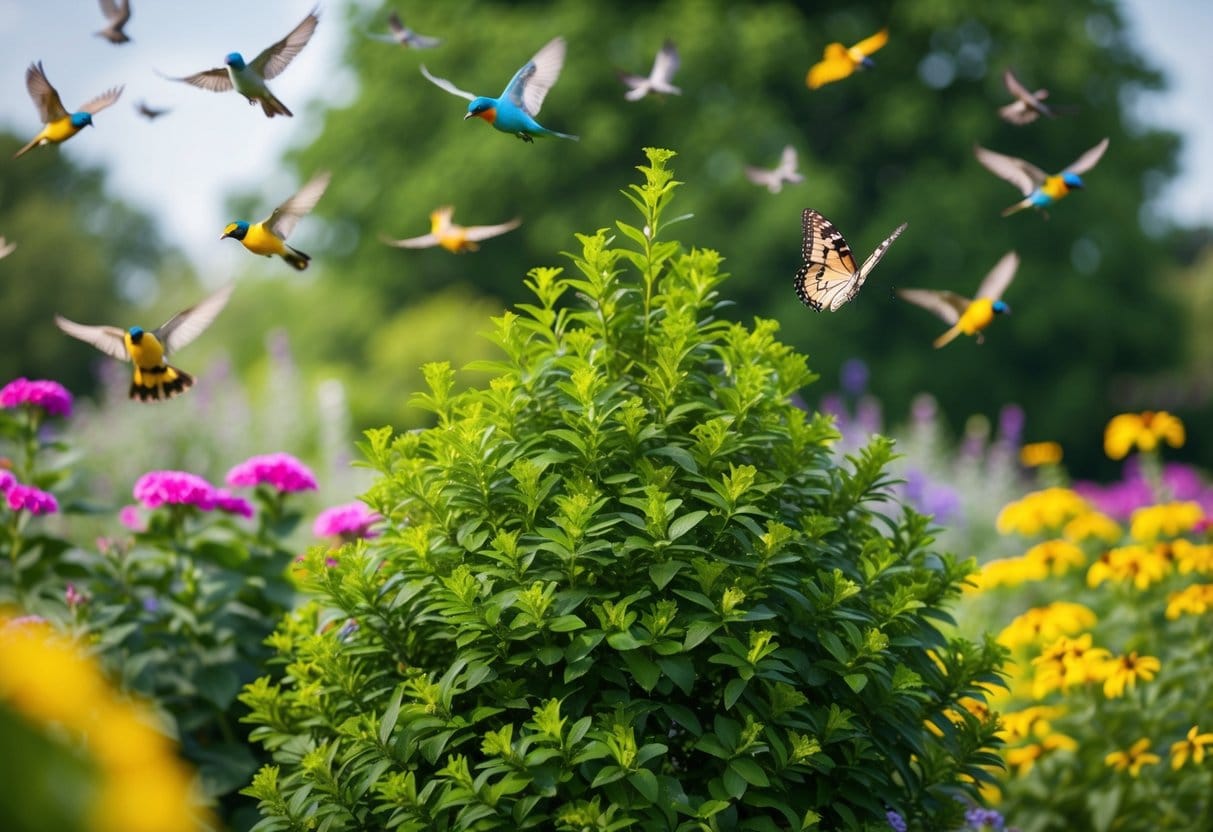
The butterfly bush (Buddleia) attracts various butterflies, making it a favorite in gardens. This deciduous shrub features vibrant flowers, with purple being the most prevalent color. It grows quickly and can enhance any outdoor space.
- Hardiness Zones: 5 to 9
- Dimensions: Approximately 5 feet tall and 6 feet wide
- Care Needs: Thrives in full sunlight and requires well-draining soil
Frequently Asked Questions
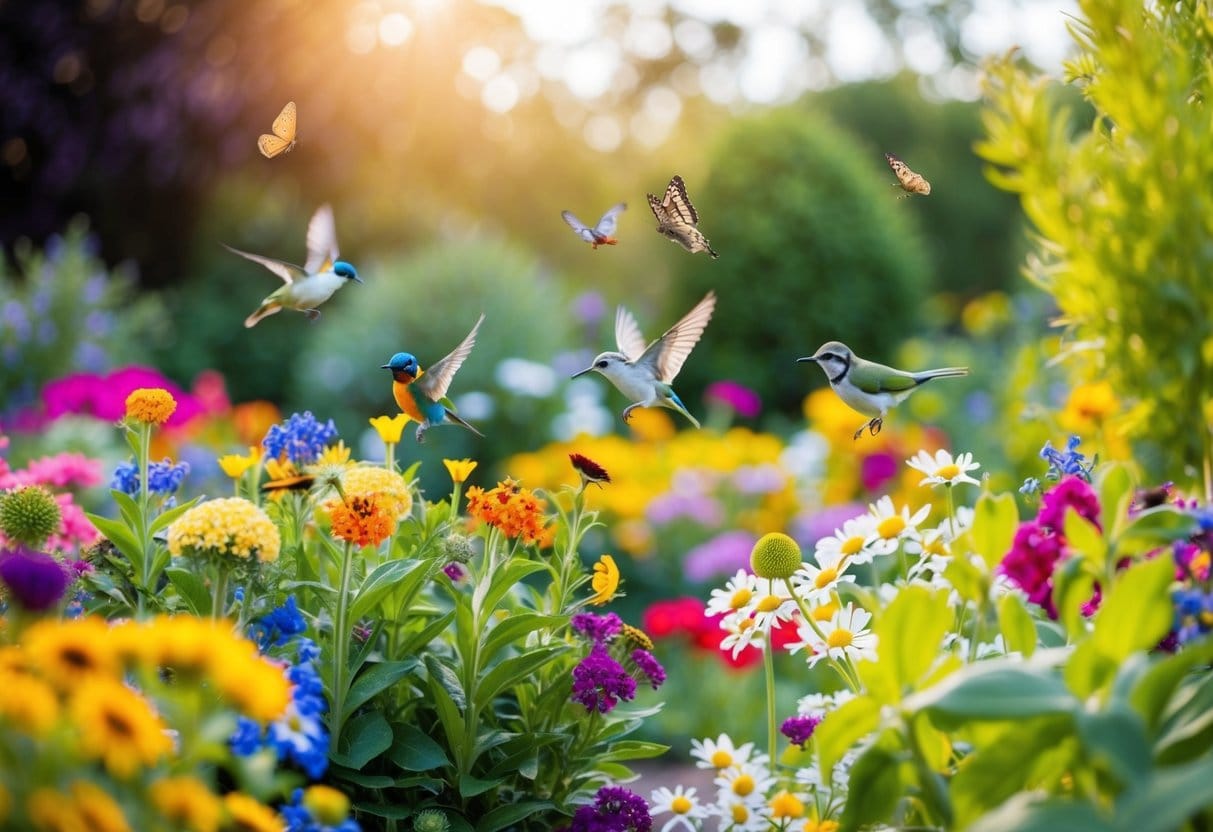
What plants attract butterflies and bees?
Certain plants are known to be effective in drawing butterflies and bees. Here are some examples:
- Milkweed: Great for monarch butterflies.
- Lavender: Attracts various bees due to its strong scent.
- Coneflowers: These are appealing to both butterflies and bees.
- Sunflowers: A favorite for many pollinators.
How can a diverse pollinator garden be created quickly?
To create a garden that invites different pollinators quickly, follow these tips:
- Choose a mix of plants: Include flowers, shrubs, and herbs.
- Opt for native species: They often adapt better and attract local pollinators.
- Plant in clusters: Grouping flowers together helps attract more pollinators.
How to make a garden friendly for birds?
To ensure that a garden is inviting to birds, consider these methods:
- Provide food sources: Use bird feeders and plant native fruit-bearing shrubs.
- Add water: Birdbaths offer drinking and bathing spots.
- Create shelter: Use dense shrubs and trees for nesting.
What flower traits attract pollinators?
Certain features in flowers are known to draw pollinators:
- Bright colors: Flowers that are vivid stand out.
- Scent: Many pollinators are attracted to fragrant blossoms.
- Nectar: A rich nectar supply is key to luring bees and butterflies.
How to find native plants for my climate zone?
To discover native, pollinator-friendly plants suitable for specific climate zones, try these steps:
- Research local gardening resources: Websites and local extension services offer valuable information.
- Visit native plant nurseries: They often have a variety of options suitable for the area.
- Consult gardening groups: Connect with local gardening clubs for recommendations.
What are other pollination methods besides insects?
In addition to insects, other methods for pollination include:
- Wind: Many trees and grasses rely on the wind to carry pollen.
- Water: Some aquatic plants use water for pollination.
- Birds: Hummingbirds and other birds can also assist in pollination by transferring pollen from flower to flower.
